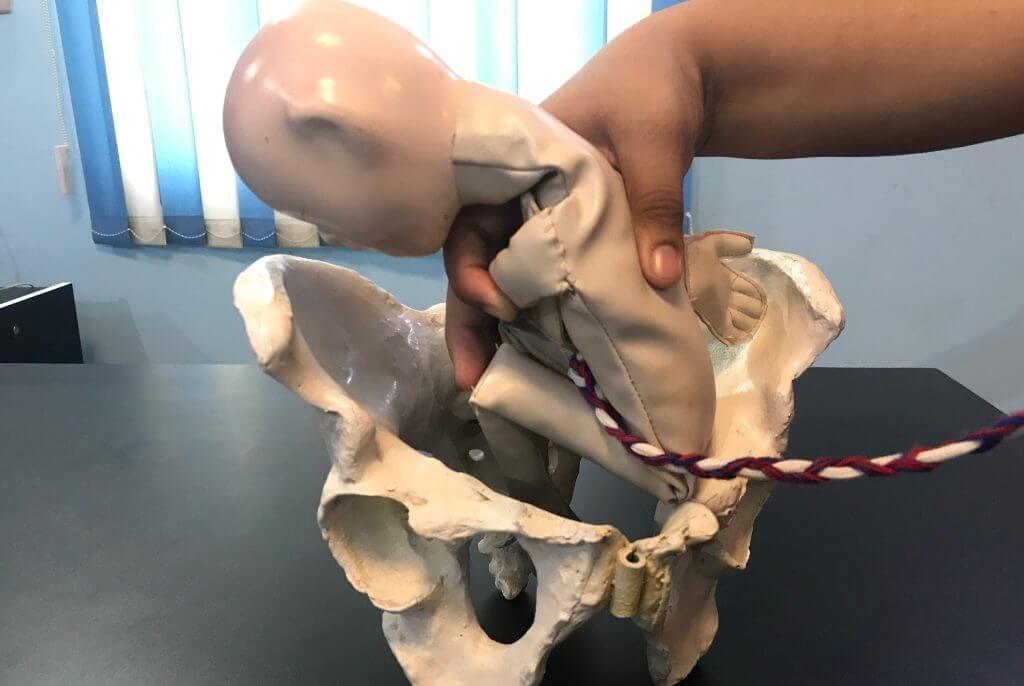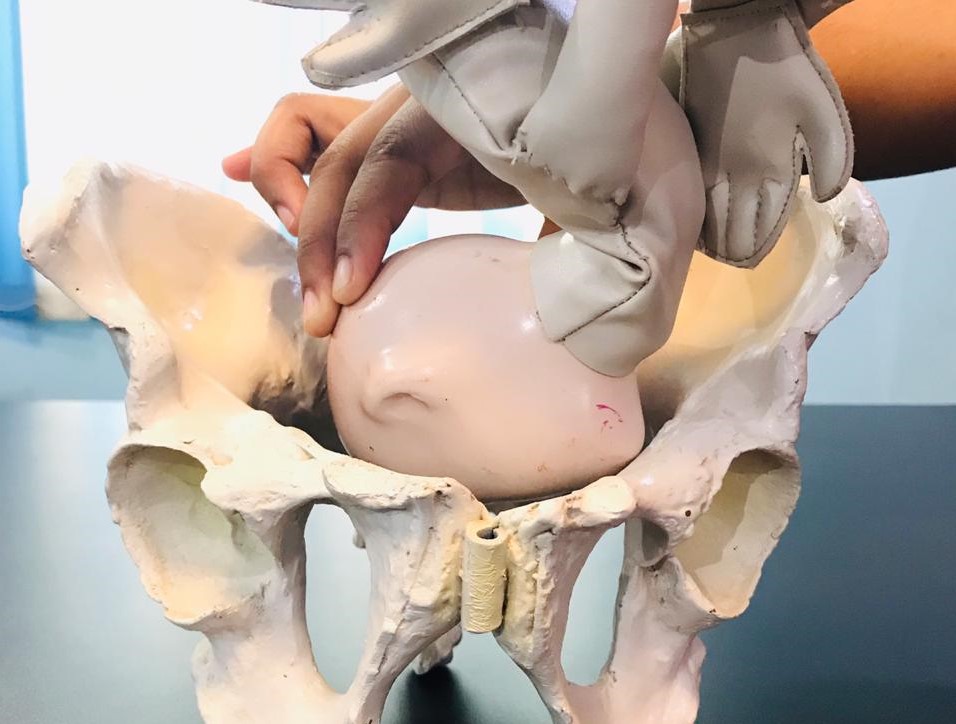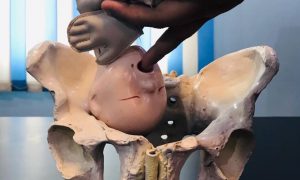Breech presentation is one of the common malpresentation.
Some of the common reasons for the breech are – Earlier weeks of pregnancy, prematurity, twins, oligohydramnios, congenital malformation, short cord, intrauterine death of the fetus, hydrocephalus, placenta praevia, contracted pelvis, multiparae, fetal abnormality, and the recurrent breech.
Lie – Longitudinal
Presentation – Podalic pole
Denominator – Sacrum
Positions– Left sacro anterior (LSA) – Commonest position, Right sacro-anterior (RSA), Right sacro-posterior (RSP), Left sacro-posterior (LSP)
Varieties (On basis of attitude and presenting part)-
- Complete (Flexed breech)
Attitude – Full flexion (Thighs are flexed at the hips and the legs at the knees. Presenting part – Two buttocks, external genitalia, and two feet.
- Incomplete
There are 3 varieties –
a) Breech with extended legs (Frank breech)- Attitude- Thighs are flexed on the trunk and the legs are extended at the knee joints. Presenting part -Two buttocks and external genitalia.
b) Footling presentation – Attitude -Both the thighs and the legs are partially extended bringing the legs to present at the brim.
c) Knee presentation- Thighs are extended but the knees are flexed.
Mechanism of Labour in Breech Presentation (Sacro-Anterior Position)
The movements occur at three places – The buttocks, shoulders, and the head.
A) Buttocks–
-
- Engagement of the buttock, which is bi-trochanteric diameter 10 c.m., in the oblique diameters of the inlet and the sacrum is directed towards the iliopectineal eminence.
- Descent of the buttocks occurs until the anterior buttock touches the pelvic floor.
- Internal rotation of the anterior buttock through 1/8th of a circle then it comes behind the symphysis pubis.
- Lateral flexion of the trunk occurs until the anterior hip comes under the symphysis pubis which is released first followed by the posterior hip.
- Delivery of the trunk and the lower limbs follows.
- Restitution occurs and the buttocks occupy the position as it was at the time of engagement.
B) Shoulders–
-
- Bisacromial diameter 12 c.m. engages in the same oblique diameter in the brim as of buttocks.
- Descent with internal rotation of the shoulders that lie in the anteroposterior diameter of the pelvic outlet.
- The trunk rotates externally through 1/8th of a circle.
- Delivery of the posterior shoulder followed by the anterior one is completed by anterior flexion of the delivered trunk.
- Restitution and external rotation causes untwisting of the trunk, putting the anterior shoulder towards the right thigh in LSA and left thigh in RSA.
- External rotation of the shoulders in the same direction because of internal rotation of the occiput through 1/8th of a circle anteriorly. The fetal trunk is now positioned as dorso-anterior.
C) Head
-
- The engaging diameter of the fetal head is suboccipito-frontal (10 cm) through the opposite oblique diameter as that occupied by the buttocks or through the transverse diameter.
- Descent with increasing flexion occurs.
- Internal rotation of the occiput occurs anteriorly by 1/8th or 2/8th of a circle placing the occiput behind the symphysis pubis.
- Further descent occurs until the sub-occiput hinges under the symphysis pubis.
- The head is born by flexion of the chin, mouth, nose, forehead, vertex, and occiput.
As the head is the most difficult part to deliver per vaginally, there are various methods to deliver it-
–Forcep Delivery
–Malar flexion and shoulder traction / Mauriceau-Smellie-Veit technique(MSV) – In this method, place the baby on the supinated left forearm with the legs hanging down both sides and the index and middle finger of the same hand are placed over the malar bones (zygomatic bone). And with the index finger on the left shoulder, ring or little finger on the right shoulder and middle finger on the suboccipital region, now the traction is given in backward and downward direction as the nape of the neck is visible, under the subpubic arch, and deliver the head by maintaining the flexion.
–Burns-Marshall Method- In this put the baby hanging down by its own weight, and the suprapubic pressure is given by the flat hand in the downward and backward direction, as the nape of the neck is visible, baby’s ankle is grasped by the hand, by placing the finger in between the two. Then maintain the traction by forming a wide circular arc and bring the limbs and trunk in an upward and forward direction.
Download the App: Android App
For more Lectures, please visit-
YouTube Channel – NursingLecture
Facebook – Facebook Page
Check out the practical video of the Mechanism of Labour in [Malpresentation] Breech Presentation here:





